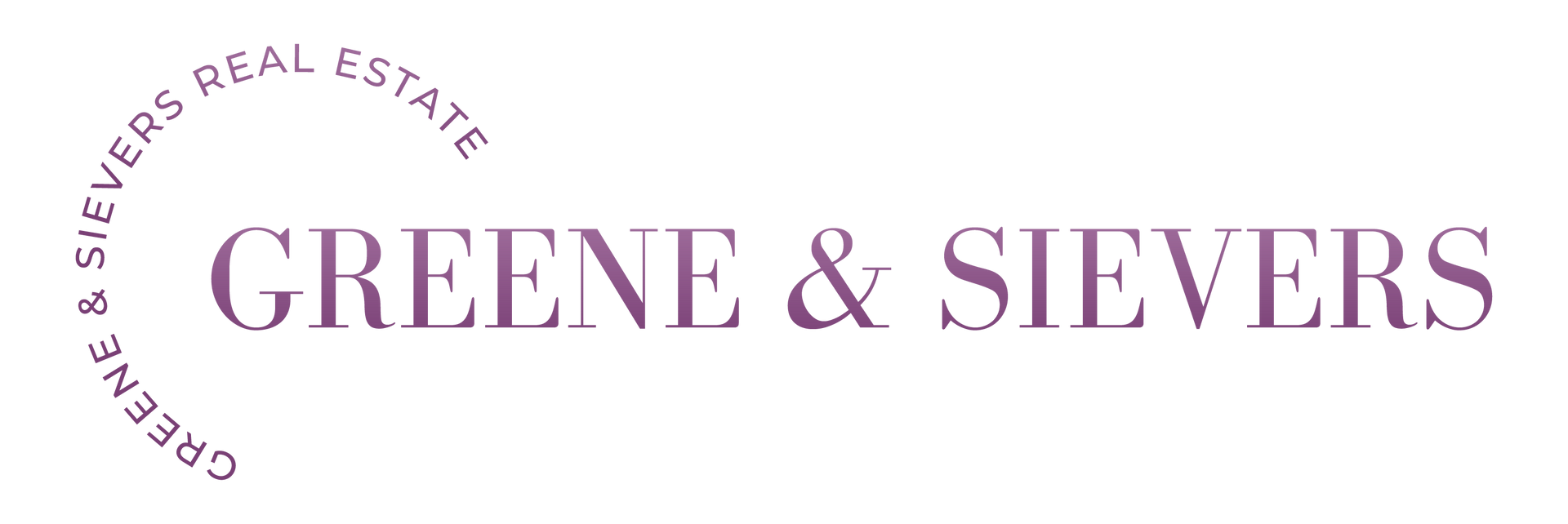GREENE & SIEVERS REAL ESTATE
Peninsula Real Estate News
GREENE & SIEVERS REAL ESTATE
Peninsula Real Estate News

By Greene & Sievers Real Estate
•
30 Apr, 2024
Did you know that you can use 1031 exchange funds for renovation expenses? I was recently chatting with a client who owns an investment property and was considering a 1031 Exchange – swapping a new property that's "like-kind" for an existing one, while deferring capital gains taxes. I shared something they were not familiar with, which was they could actually use a portion of those exchange funds for renovations on the new property. It is specifically referred to as an improvement exchange. By doing this they could potentially: Defer capital gains taxes on the sale of their existing property, by reinvesting the proceeds into the replacement property and improvements, allowing their money to grow tax-deferred. Increase the new property’s value by using sale proceeds for improvements on the replacement property. This can also result in higher rental income or a larger profit when you eventually sell. Customize the replacement property to perfectly suit your investment goals. It's important to remember that this is a complex tax strategy. There are strict time constraints, the replacement property must be "like-kind," and working with both a 1031 Qualified Intermediary (A neutral third-party middleman, facilitating the exchange process and ensuring compliance with IRS regulations) and a tax advisor is crucial for a smooth and compliant tax-deferred exchange. If you would like to learn more about this strategy, contact us via e-mail at Team@greenesievers.com to schedule a time to meet. We can also put you in touch with a 1031 specialist who can further explain the details of this approach.

By Greene & Sievers Real Estate
•
30 Apr, 2024
“Marry the House, Date the Rate”: Finding Creative Financing Solutions to buy when interest rates are up (like a 3-2-1 Buydown) Just like when you marry someone, there are foundational things you need and then there are things you want, which often change. Similarly when buying a home, the purchase price is fixed, but interest rates change. I was in an office meeting last week and an agent mentioned that 80+ groups of people attended their open house, another agent received 38 offers on a property, and homes are going way over asking. All this activity is driving home prices up, and once interest rates come down, I can only assume demand will continue to increase as well as housing prices. When speaking with clients, I have been suggesting that they speak with their lenders about finding creative financing options, such as the 3-2-1 buydown. A 3-2-1 buydown is a temporary mortgage interest rate reduction strategy, which allows a buyer to qualify for a higher mortgage. This approach lowers the interest rate for the first three years of the loan by 3% in the first year, 2% in the second year and 1% in the third year - then the rate goes back to the original rate for the remaining term of the loan. This strategy is beneficial for homebuyers who are expecting interest rates to fall in the next few years and want to save money on their monthly payments in the meantime. Here is an example of how a 3-2-1 buydown would work for a $1,000,000 home loan with a 5% down payment and an initial interest rate of 6.75%: Year 1: The interest rate would be reduced to 3.75%, resulting in a monthly payment of approximately $4,938. This is a savings of $1,762 per month compared to the original monthly payment of $6,700. Year 2: The interest rate would be increased to 4.75%, resulting in a monthly payment of approximately $5,494. This is still a savings of $1,206 per month compared to the original monthly payment of $6,700. Year 3: The interest rate would be increased to 5.75%, resulting in a monthly payment of approximately $6,082. This is still a savings of $618 per month compared to the original monthly payment of $6,700. Year 4 and beyond: The interest rate would revert to the original rate of 6.75%, resulting in a monthly payment of $6,700. It is important to note that the 3- 2-1 buydown is typically paid for by the seller of the home (as opposed to a price reduction), or a lender and it is not available from all lenders. Additionally, it is important to make sure that you can afford the monthly payments after the buydown period ends. If you would like to learn more about this strategy, contact us via e-mail at Team@greenesievers.com to schedule a time to meet. We can also put you in touch with a lender who can further explain the details of this approach.

By Greene & Sievers Real Estate
•
05 Feb, 2024
2023 was a bit of a wild ride for those seeking to finance a home purchase – inventory was low and mortgage rates played hopscotch, so successfully purchasing a home got trickier. However, 2024 is targeted to be a recovery year in real estate given buyers confidence in projected lower interest rates, creative ways to borrow and new conforming loan limits. Greene & Sievers Real Estate is here to break it down for you. Here’s a quick lesson on what the new loan limits are and how they're shaking things up in the housing game. Adjustments in conforming loan limits for the year 2024, seek to align with shifts in the housing market. This ensures that despite the surge in housing costs, the average homebuyer retains accessibility to conventional mortgages. For 2024, the base limit for a one-unit property is set at $766,550, a notable increase of $40,350 from the preceding year. Fortunately there is good news for the Bay area. The conforming loan limit for Alameda, Contra Costa, San Francisco, San Mateo and Santa Clara counties, jumps to $1,149,825, which is 150% of the base limit. This increase in the conforming loan amount, which may result in a lower interest rate, should open the door for more buyers to qualify for a loan. In general, conforming loan limits draw the line between regular and jumbo mortgages. Big players like Fannie Mae and Freddie Mac set the criteria, such as down payments, credit scores and documentation for the mortgages they snag. Then, the Federal Housing Finance Agency (FHFA), their watchdog, annually sets the max loan sizes (aka conforming loan limits) for Fannie Mae and Freddie Mac to buy. They bundle a bunch of mortgages into securities and sell them in the secondary market. It's their way of playing it safe when they grab mortgages from lenders.When Fannie Mae and Freddie Mac acquire a mortgage, they take on the risks and share them with investors. Jumbo loans, surpassing these conforming limits, distinguish themselves from conventional mortgages as they are not eligible for acquisition by Fannie Mae and Freddie Mac. Lenders typically retain jumbo loans for the entire life of the loan, thereby elevating risk exposure which necessitates higher interest rates for prospective homebuyers. For more information or lender recommendations, contact Peggy and Jody with Greene & Sievers Real Estate.

By Greene & Sievers Real Estate
•
18 Oct, 2023
Inheriting a loved one's home can be a wonderful gift, but it can also come with the burden of capital gains tax when you decide to sell it. Capital gains tax is a fee you pay on the profit made from selling assets like real estate, stocks, or even a car. This tax is calculated based on the difference between the purchase price and the sale price. Now, there are two types of federal capital gains tax - short-term and long-term. Short-term tax applies if you sell an asset within a year, and the rate matches your regular income tax rate. On the other hand, long-term capital gains tax applies if you hold onto the asset for over a year, and the rate is typically lower, varying from 0% to 20% depending on your income. It's also important to know that many U.S. states have their own additional capital gains tax rates. But in a few states like Alaska, Florida, and Texas, you won't face a state-level capital gains tax. So, how can you reduce capital gains tax on an inherited property? Here are some strategies: ⦁ Sell the property quickly: If you sell the property shortly after inheriting it, you can take advantage of the "step-up basis." This means you'll only be taxed on the difference between the property's value at the time of inheritance and the sale price. ⦁ Make it your primary residence: If you live in the inherited property for at least two out of five years before selling, you might qualify for a primary residence exclusion, allowing you to exclude some or all of the capital gains. ⦁ Rent the property: If you don't want to live in the property but want to keep it for a while, consider renting it. You can use the proceeds from the sale to buy another property through a 1031 tax-deferred exchange, deferring capital gains taxes. ⦁ Disclaim the inheritance: If you'd rather not deal with the tax implications, you can choose to disclaim the property, transferring it to the next eligible person. ⦁ Transfer the property into a trust before death: Consider having your loved one transfer the property to a trust before they pass away, as the type of trust chosen can impact the tax treatment. In conclusion, minimizing capital gains tax on inherited property is possible with these strategies, but it's crucial to consult with a professional for the best advice. Taxes can be complex, so expert guidance is your best bet. Source: https://www.innovativecpagroup.com/resources/newsarticles/how-to-minimize-capital-gains-tax-on-inherited-property/
Local News
Local Lifestyle
Events
Restaurants
Market Reports
Navigation
Connect With Us
Main Office
1430 Howard Avenue
Burlingame, CA 94010
Navigation
Connect
Main Office
1430 Howard Avenue
Burlingame, CA 94010
Each office is independently owned and operated.
Powered by California Concierge
Each office is independently owned and operated.
Powered by California Concierge



